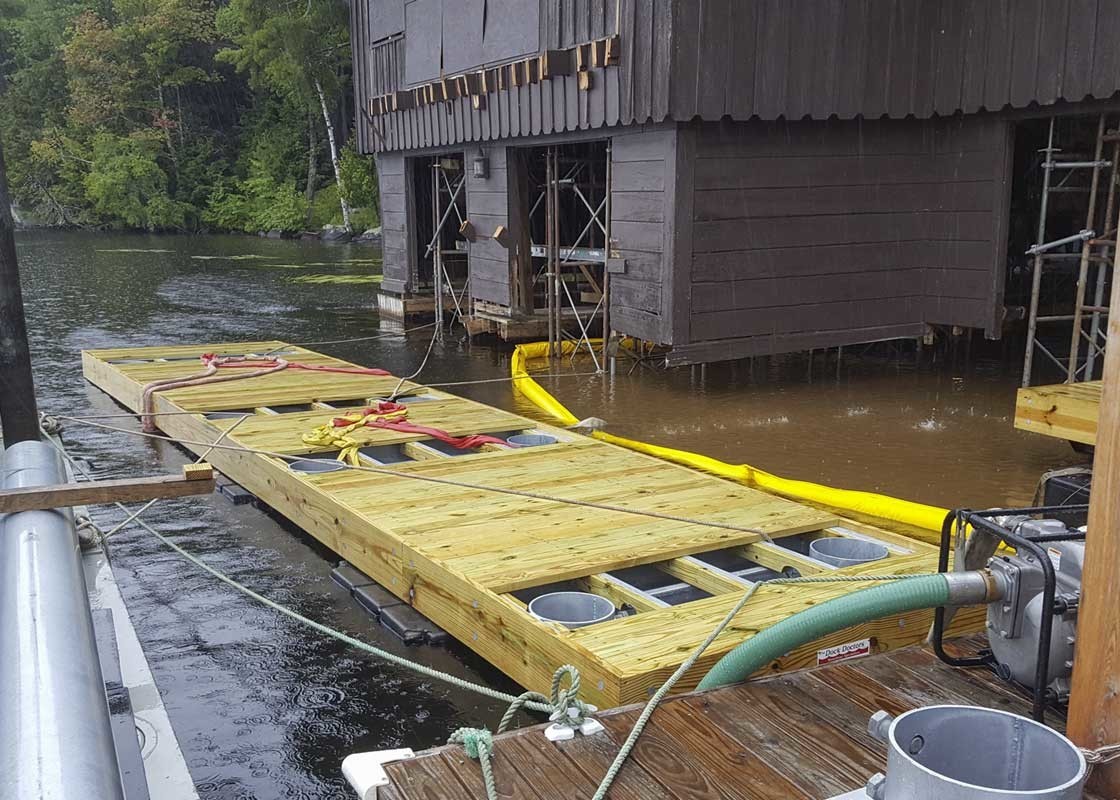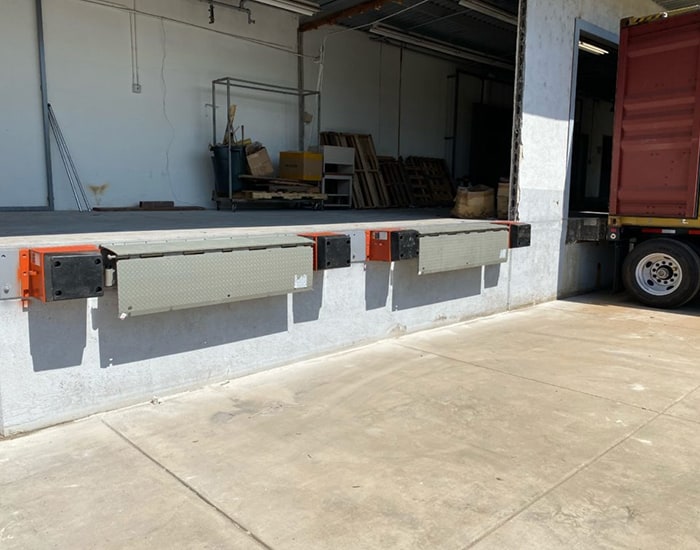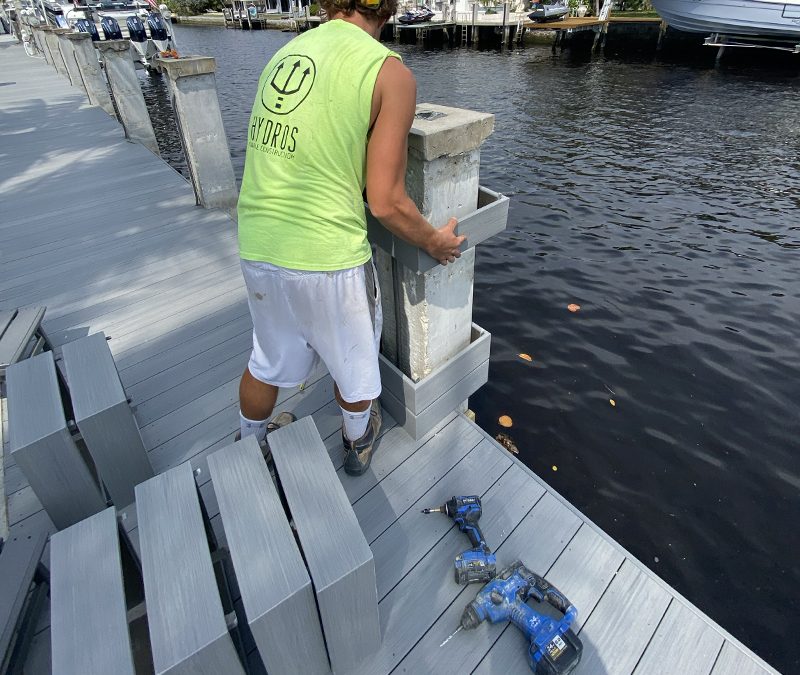DIY Tips for Simple Dock Repairs You Can Handle
DIY Tips for Simple Dock Repairs You Can Handle
Blog Article
Effective Dock Repair Techniques: Ensuring Structural Honesty
Guaranteeing the architectural integrity of anchors through reliable repair service techniques is extremely important for the durability and safety of aquatic centers. Consequently, selecting the best fixing materials, such as composite materials and corrosion-resistant alloys, is important for durability.
Evaluating Dock Damages
Analyzing dock damage is an essential primary step in making sure the architectural integrity and safety of any type of docking center. This first evaluation involves a detailed examination to recognize both visible and covert problems. Trick facets to examine include the dock's foundation, pilings, decking, and hardware. Each element should be inspected for indicators of wear, rot, deterioration, or various other kinds of degradation that could compromise the structural integrity.
Structural engineers or qualified assessors normally do these assessments making use of specialized methods and devices. Underwater inspections might employ sonar tools or from another location operated automobiles (ROVs) to identify immersed damage. Over water, aesthetic assessments are matched by utilizing dampness meters and other diagnostic devices to uncover underlying concerns not promptly visible to the nude eye.

Finding Repair Materials
Choosing the proper fixing products is a crucial step in the dock restoration process, one that directly influences the longevity and performance of the repaired structure. Material selection should be driven by aspects such as ecological problems, load-bearing needs, and compatibility with existing dock parts. Wood is a conventional option for docks due to its natural resilience and visual allure. Picking the appropriate type of wood, such as pressure-treated lumber or naturally rot-resistant varieties like cedar or teak wood, is important to endure water environments.
Along with wood, composite products are increasingly preferred because of their resilience and reduced maintenance needs. Compounds, typically made from a mix of plastic and wood fibers, supply outstanding resistance to rot, pests, and UV damage. For steel docks, selecting corrosion-resistant alloys such as galvanized steel or marine-grade aluminum is vital to avoid corrosion and ensure architectural integrity in saline water problems.
Epoxy materials and marine-grade sealants are crucial for repairing fractures and securing joints, providing a waterproof barrier and improving the dock's overall stamina. By diligently choosing high-grade materials, dock fixings can achieve resilient outcomes, thus securing versus future degradation and guaranteeing risk-free, trusted usage.
Structural Reinforcement Methods
Effective architectural support methods are vital in making sure the stability and longevity of dock repairs. This approach is specifically efficient for docks exposed to hefty tons or severe environmental problems.
One more vital technique is the application of fiber-reinforced polymers (FRP) These products use high strength-to-weight ratios and excellent resistance to deterioration, making them excellent for strengthening wooden or concrete docks. FRP can be applied in sheets or strips and bound with epoxy resins to boost structural integrity.
Supporting and anchoring systems additionally play a critical function in structural support. Cross-bracing, using steel or wooden light beams, can combat side pressures, reducing guiding and movement. Securing systems, such as helical piers or driven piles, give a steady foundation by moving loads to deeper, more steady soil layers.
Finally, the integration of load-distribution plates can assist distribute weight a lot more evenly throughout the dock's surface, alleviating localized anxiety factors. These methods jointly ensure that anchors continue to be safe and robust, qualified of withstanding the roughness of their functional environment.
Advanced Repair Service Approaches

One more sophisticated method includes underwater welding, which enables for repair work to be carried out without the need to dewater the area. This method is particularly advantageous for addressing structural concerns in immersed dock look these up elements, making sure very little interruption to operations. Boosted welding strategies, paired with robot systems, provide precision and reliability, thereby expanding the life-span of the dock.
Furthermore, cathodic security systems are executed to avoid corrosion in metal dock frameworks. By utilizing sacrificial anodes or amazed current systems, these strategies properly minimize the electrochemical procedures that result in material damage.
Last but not least, advanced monitoring modern technologies, such as architectural health monitoring (SHM) systems, provide real-time data on the problem of dock frameworks. These systems enable proactive upkeep and prompt interventions, inevitably guaranteeing the long-term architectural integrity of the dock.
Upkeep and Avoidance
Maintenance and prevention are fundamental concepts that underpin the long life and safety and security of dock frameworks. Routine inspections are vital, enabling very early detection of deterioration, possible weaknesses, visit their website and ecological influences. A positive strategy, involving regular look for corrosion, rot, and structural changes, reduces pricey repairs and extends the dock's functional life.
Preventive procedures should include using safety coverings to steel parts to defend against corrosion and making use of cured wood to stand up to degeneration. Additionally, guaranteeing appropriate water drainage and ventilation can avoid water build-up, which is an usual cause of structural deterioration. Including top quality materials and adhering to supplier standards during building and fixing stages also play important duties in enhancing sturdiness.

Training personnel in dock upkeep finest methods guarantees regular application of preventive measures. Leveraging technological breakthroughs, such as drones for examinations and sensing units for real-time tracking, can even more boost upkeep initiatives. By focusing on maintenance and avoidance, dock owners can make sure architectural integrity, functional safety and security, and affordable management over the dock's life-span.
Final Thought
In verdict, maintaining the structural click site honesty of marine facilities requires thorough dock repair methods. Advanced fixing techniques, combined with normal maintenance methods, make sure the dock continues to be safe and functional under varied environmental conditions.
Guaranteeing the structural stability of anchors via reliable fixing strategies is paramount for the longevity and security of aquatic centers.Choosing the ideal fixing materials is a pivotal step in the dock restoration process, one that directly influences the durability and performance of the repaired structure.Effective structural reinforcement strategies are critical in guaranteeing the stability and longevity of dock repairs. By focusing on upkeep and avoidance, dock owners can guarantee structural integrity, operational safety and security, and cost-efficient monitoring over the dock's life expectancy.
In verdict, preserving the structural integrity of aquatic facilities necessitates comprehensive dock fixing methods.
Report this page